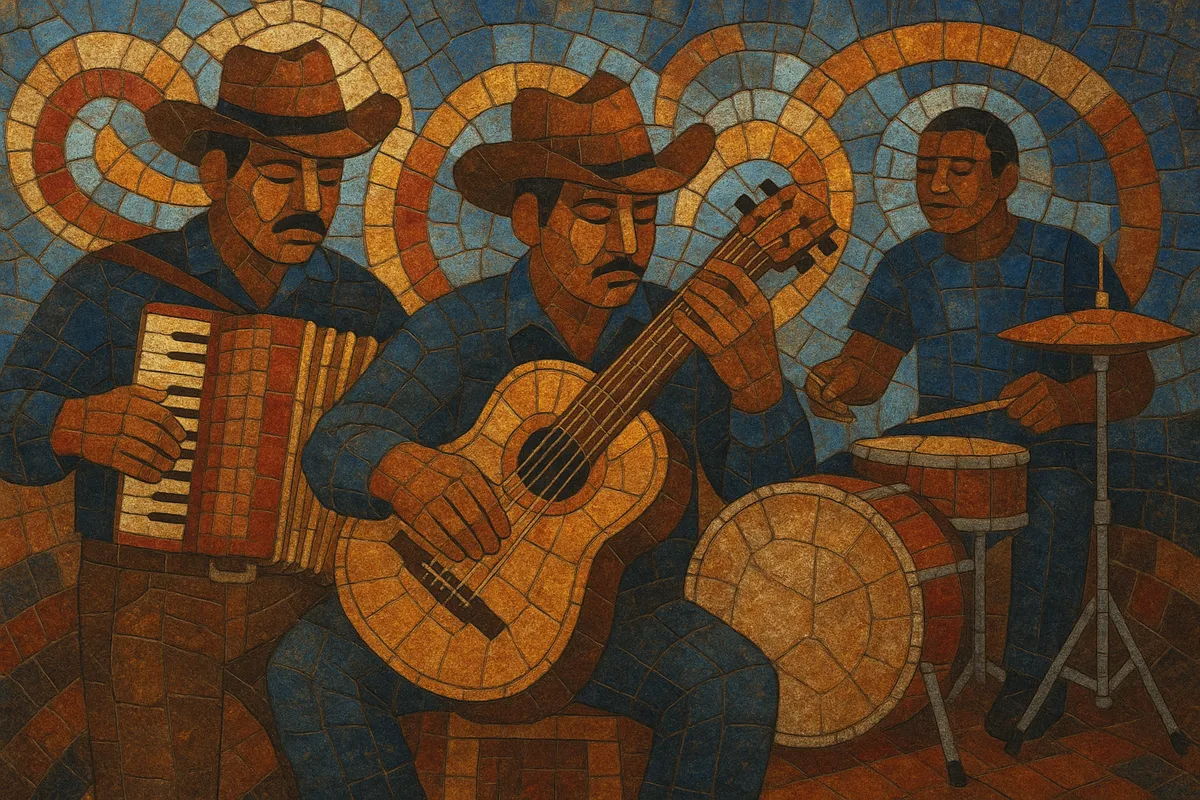Tejano is a Texas–Mexican popular music that blends Mexican song forms with Central European dance music brought by German, Czech, and Polish immigrants to South Texas. At its core are lively polkas, waltzes, and rancheras led by accordion and bajo sexto, supported by bass and drums.
Over time Tejano developed two main currents: conjunto (a smaller, accordion‑driven ensemble with a rustic edge) and orquesta tejana (a bigger, brass/strings or keyboard‑based sound shaped by big band, R&B, and pop). From the 1980s onward, synthesizers, drum machines, and slick pop arrangements modernized the style, while cumbia rhythms became a staple at dance halls. The result is a dance‑forward, bilingual tradition whose repertoire runs from upbeat polkas to romantic ballads.
European immigrants in South Texas brought polkas, waltzes, schottisches, and mazurkas, which merged with Mexican ranchera and corrido traditions among Tejanos (Texas Mexicans). The accordion and bajo sexto became the hallmark of conjunto—compact, dance‑ready ensembles playing Mexicanized polkas and waltzes.
Urban bands adopted orquesta instrumentation—brass, strings, and later electric guitar and keyboards—absorbing big band swing, R&B, and early rock and roll. Parallel to conjunto in cantinas and dances, orquestas filled ballrooms, expanding Tejano’s range from instrumental dance tunes to crooning boleros and rancheras. Figures like Little Joe y La Familia helped push a modern, sophisticated Tejano sound in the 1960s.
Studios and labels in Texas professionalized production. Drum kits, electric bass, and keyboards became standard, and cumbia rhythms from Colombia were integrated, birthing a signature Tejano cumbia feel. Bands such as Mazz and La Mafia embraced pop and R&B harmonies, smooth vocals, and synthesizers, defining the contemporary Tejano palette.
Selena y Los Dinos catalyzed Tejano’s biggest crossover moment, bringing polished, bilingual pop sensibilities and nationwide attention (including a Grammy in 1994). Emilio Navaira and others followed, touring widely and landing on Latin and even mainstream charts.
Though radio formats shifted and the boom cooled, Tejano remains a vibrant regional and diasporic scene sustained by festivals, legacy bands, and new artists who mix norteño, country, R&B, and pop. Digital production and streaming have enabled both tradition‑minded conjunto acts and slick, pop‑leaning Tejano groups to thrive.


